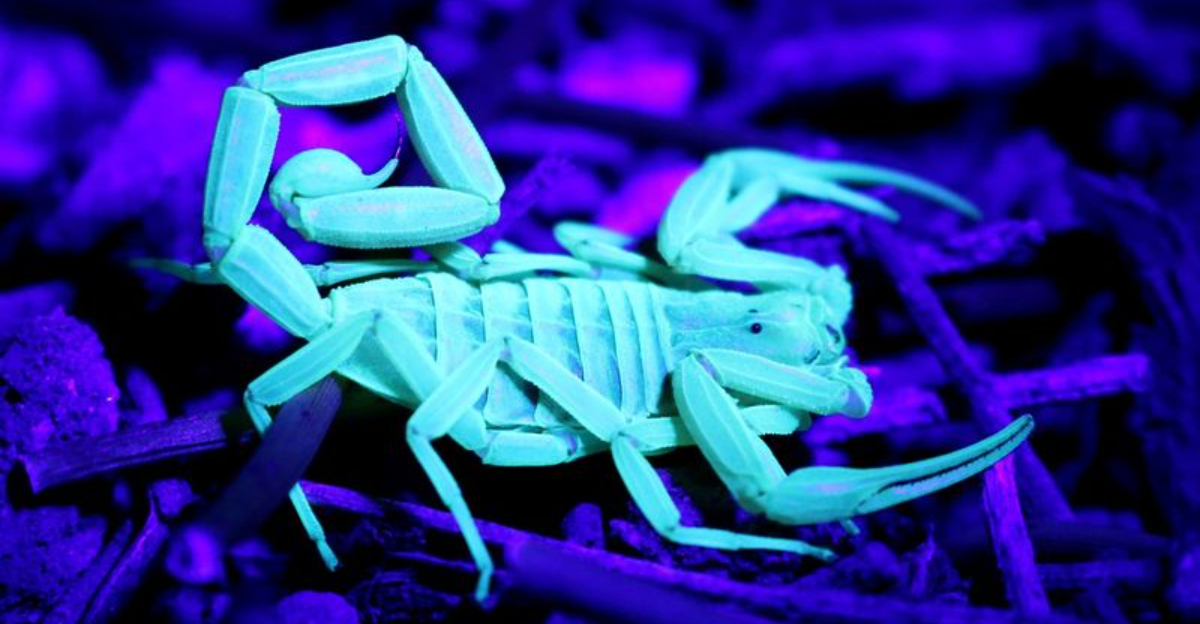The natural world is brimming with wonders, and among them are the fascinating creatures that glow under UV light.
These glowing organisms captivate both scientists and nature enthusiasts alike, revealing hidden beauty and survival adaptations.
Today’s article explores some extraordinary animals that emit a glow when exposed to ultraviolet light, offering a glimpse into a world often unseen by the naked eye.
1. Hawksbill Sea Turtle
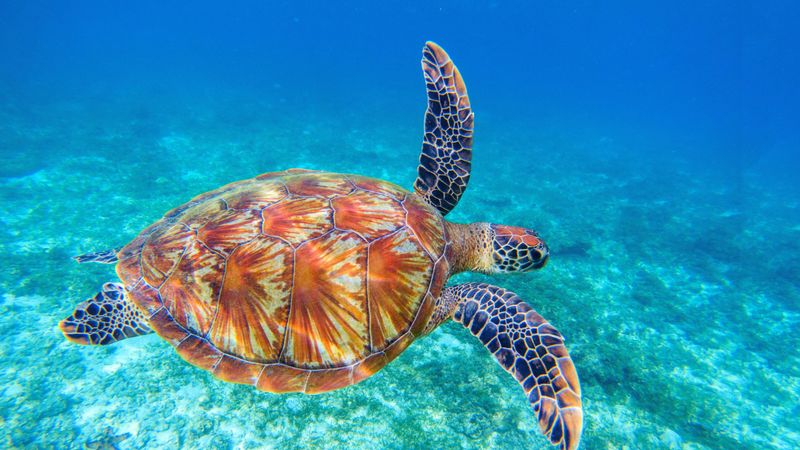
In the ocean’s depths, the Hawksbill Sea Turtle emerges as a luminescent marvel. This critically endangered marine reptile is renowned for its beautiful, overlapping scutes that form a striking pattern on its shell.
When illuminated with UV light, these patterns reveal an ethereal glow, transforming the turtle into a creature of mythical allure.
This captivating visual spectacle is a recent discovery, adding a new layer of intrigue to this ancient mariner. Beyond its visual appeal, the Hawksbill plays a crucial role in maintaining the health of coral reefs. By feeding on sponges, it prevents these organisms from overwhelming the reefs, thus promoting biodiversity.
The glowing patterns might also serve as a form of communication or camouflage within the vibrant marine environment.
For conservationists, understanding such unique traits aids in efforts to protect these turtles from threats like poaching and habitat loss. Embracing the beauty of this glowing wonder encourages further appreciation and protection of marine biodiversity.
2. Scorpion
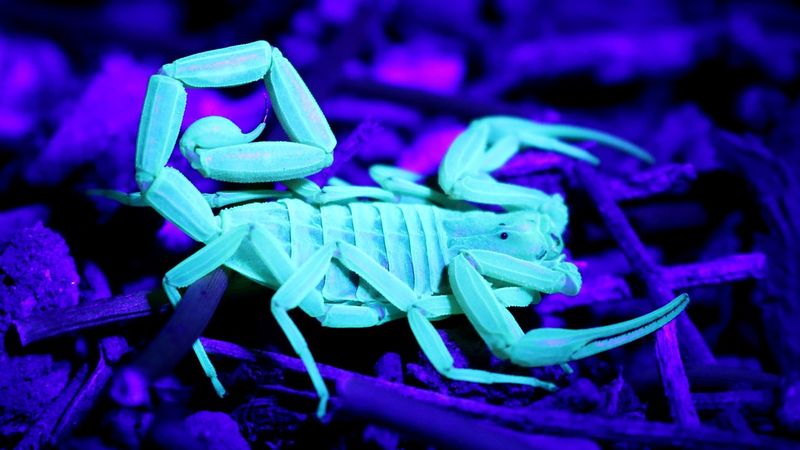
Scorpions are often seen as mysterious and formidable creatures. Under ultraviolet light, they exhibit an unexpected transformation, glowing in shades of blue and green.
This bioluminescence stems from substances in their exoskeleton, creating a mesmerizing visual effect that intrigues researchers and adventurers alike.
The glow serves multiple purposes, one of which is to confuse and deter predators. It is also thought that scorpions use UV sensitivity to find shade during the day, aiding their survival in harsh desert environments.
This adaptability underscores their status as resilient and resourceful arachnids. For those daring enough to explore desert landscapes at night, spotting a glowing scorpion can be both thrilling and educational.
It serves as a reminder of nature’s complexity and the hidden wonders that await discovery, particularly in regions where these enigmatic creatures thrive.
3. Aye-aye
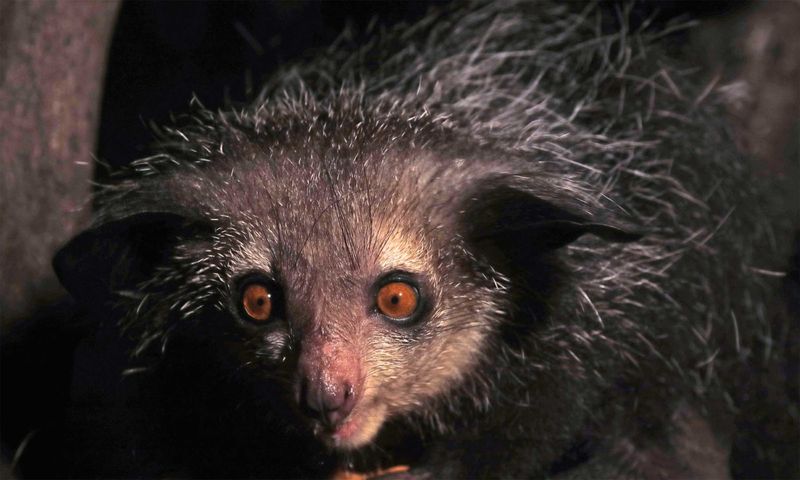
Deep within Madagascar’s lush rainforests, the Aye-aye stands out as a peculiar primate with an unusual trait.
When exposed to UV light, its fur emits a ghostly glow, adding to its already mysterious aura. This adaptation might play a role in communication or social interaction among these nocturnal creatures.
The Aye-aye is famous for its elongated middle finger, which it uses to tap on trees and locate insects—a behavior known as percussive foraging. This unique feeding strategy is complemented by its glowing fur, which may help in nighttime navigation or predator avoidance.
Conservation efforts are crucial for the Aye-aye, as habitat destruction threatens its existence. Studying its bioluminescent properties offers insights into its behavior and ecology, highlighting the importance of preserving Madagascar’s unique biodiversity.
Encountering this glow-in-the-dark primate is a rare and enchanting experience for those venturing into its natural habitat.
4. Biofluorescent Coral
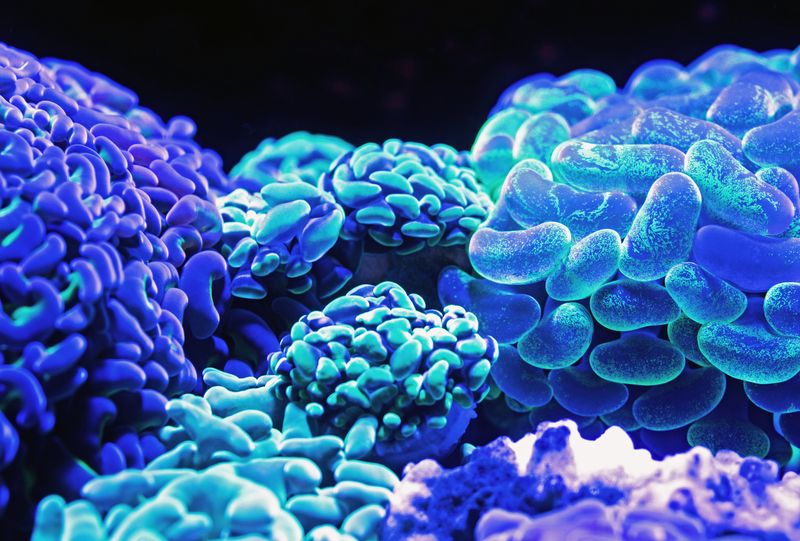
Coral reefs are often referred to as the rainforests of the sea, teeming with life and color. Biofluorescent corals add an additional layer of beauty to these underwater ecosystems, glowing vividly under UV light.
This phenomenon occurs due to proteins in the corals that absorb ultraviolet rays and re-emit them as visible light. The stunning display serves more than aesthetic purposes; it plays a vital role in the coral’s survival.
The emitted light can attract symbiotic algae, which provide essential nutrients through photosynthesis. Moreover, biofluorescence may offer protection against harmful UV radiation, contributing to the coral’s resilience in changing environmental conditions.
For marine biologists and divers, witnessing this luminous spectacle is both a visual treat and a reminder of the delicate balance within coral ecosystems.
Understanding these glowing corals is key to conservation efforts, especially as threats like climate change and ocean acidification continue to impact coral reefs worldwide.
5. Glowing Millipede
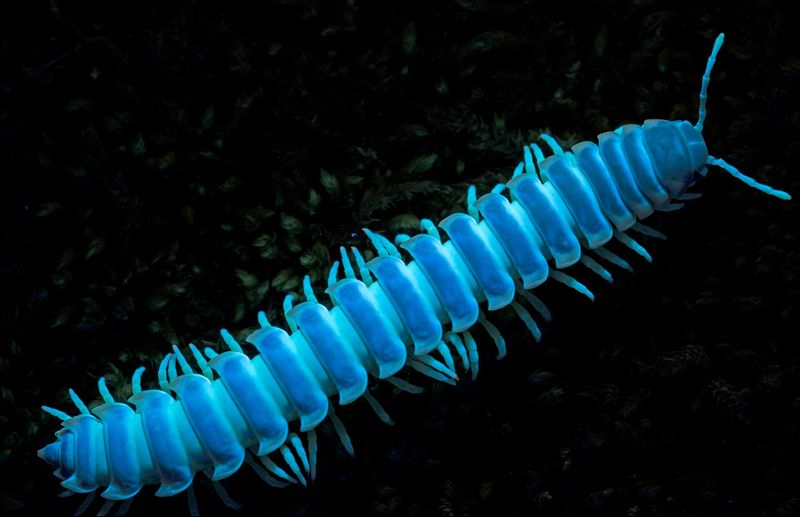
In the forest shadows, the Glowing Millipede reveals its unique bioluminescence. This curious arthropod emits a soft blue-green glow when exposed to ultraviolet light, a feature that captivates both scientists and nature enthusiasts.
The glow is produced by chemicals within its exoskeleton, serving as a potential defense mechanism against predators.
The bioluminescence might act as a warning signal, indicating the millipede’s toxicity to potential threats. This chemical defense is crucial for its survival, deterring predators and allowing the millipede to thrive in its natural habitat.
Exploring forested regions where these glowing millipedes reside can be a fascinating adventure. It provides an opportunity to observe the interplay between predator and prey, as well as the evolutionary adaptations that enable such creatures to persist.
The glowing millipede’s presence underscores the intricate and often hidden dynamics of forest ecosystems.
6. Glowworm
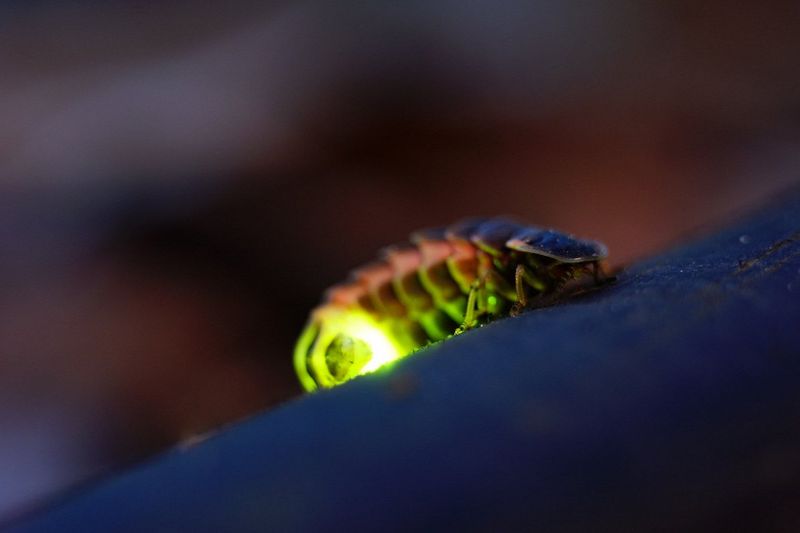
The name says it all, right? Glowworms are perhaps best known for their enchanting displays in dark caves, where they create starry illusions with their glow.
When subjected to UV light, these creatures intensify their luminescent output, casting a captivating blue hue in subterranean environments.
This glow is produced by a chemical reaction within their bodies, used primarily to attract prey. The light emitted by glowworms lures unsuspecting insects, which become ensnared in the sticky threads produced by the glowworms.
This ingenious hunting strategy ensures a steady food supply, highlighting the evolutionary ingenuity of these bioluminescent wonders.
Exploring glowworm caves offers a surreal experience, akin to stepping into a fantasy world. It emphasizes the diverse ways organisms have adapted to niche environments, making glowworms a subject of interest for both tourists and researchers.
Their glow not only serves a practical purpose but also adds a touch of magic to the natural world.
7. Blacklight Frog
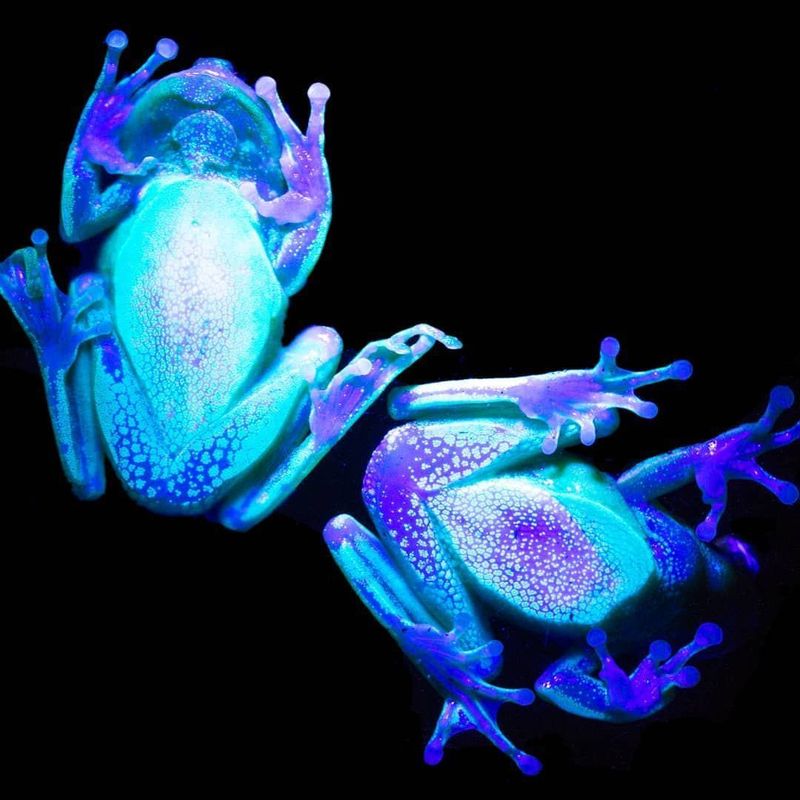
Amidst the humid embrace of South American rainforests, the Blacklight Frog presents a striking spectacle.
Under UV light, this amphibian’s skin illuminates with vibrant hues, a result of unique pigments that react to ultraviolet exposure. The glowing appearance adds an additional layer of mystique to this already colorful frog.
The purpose of this bioluminescence remains a subject of scientific curiosity. It may play a role in mate attraction, territorial displays, or as a warning to predators of the frog’s toxicity.
This multi-functional glow exemplifies the complexity of survival strategies in the natural world. For herpetologists and nature lovers, encountering a Blacklight Frog is an exciting revelation of the hidden wonders within rainforest ecosystems.
Studying these glowing amphibians provides insights into the ecological dynamics of their habitats and highlights the need for conservation of such biodiverse regions.
8. Glowing Parrotfish
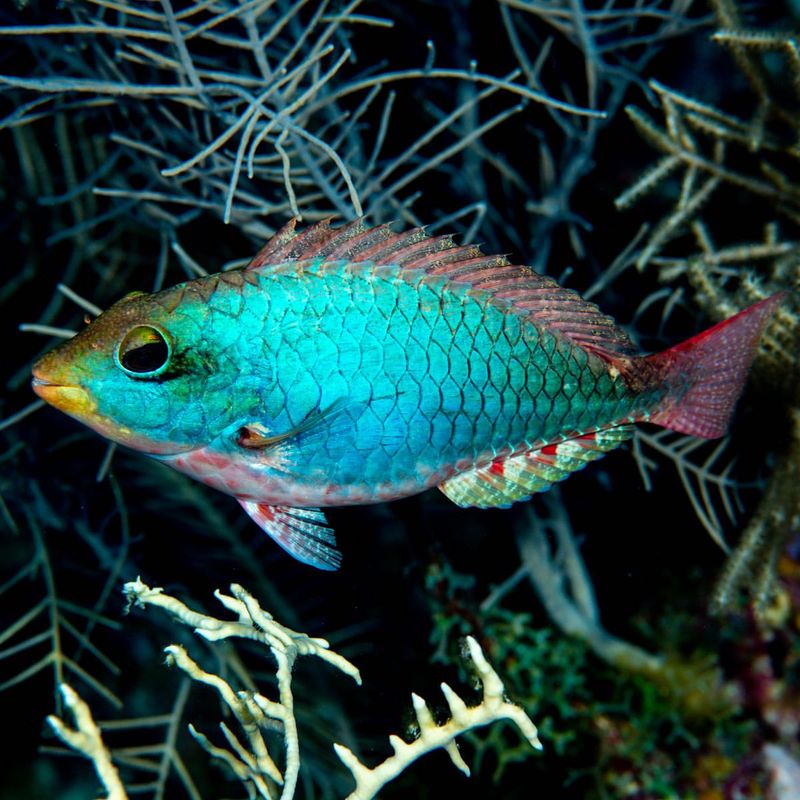
Parrotfish are known for their striking colors and playful demeanor in coral reefs. What many don’t realize is that under UV light, their scales exhibit an extraordinary glow.
This bioluminescence is thought to assist in communication and social interactions among these vibrant fish. The glow may also serve as a form of camouflage, blending the parrotfish with the shimmering underwater environment, thus confusing predators.
This adaptive feature exemplifies the intricate balance of life within coral ecosystems, where every trait enhances survival. Snorkelers and divers often delight in the sight of glowing parrotfish, adding an element of wonder to underwater explorations.
These encounters underline the importance of protecting coral reefs, not only for their beauty but also for the unique behaviors they host. Understanding the parrotfish’s glowing properties enriches our appreciation of marine biodiversity and its conservation.
9. Biofluorescent Spiders
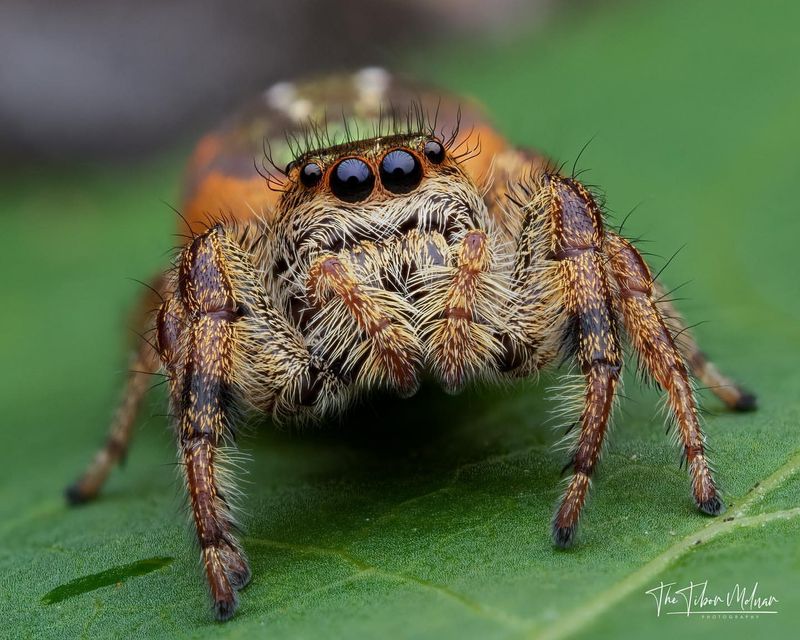
Spiders are typically associated with stealth and shadow, but under UV light, some species reveal a luminous side.
Biofluorescent spiders glow with an eerie light, a trait that intrigues arachnologists and nature enthusiasts. This glow is attributed to specific compounds in their exoskeletons, casting these spiders in a new, fascinating light.
The bioluminescence might aid in communication or mating displays, signaling readiness to potential partners.
Alternatively, it could serve as a method to deter predators by mimicking the glow of toxic organisms, adding to the spider’s arsenal of survival tools.
For those intrigued by the enigmatic world of spiders, witnessing these glowing creatures offers a new perspective on their ecological roles.
It highlights the diversity among arachnids and the myriad ways they adapt to their environments. Exploring areas where biofluorescent spiders dwell can lead to unexpected discoveries and a deeper appreciation of nature’s ingenuity.
10. Glowing Jellyfish
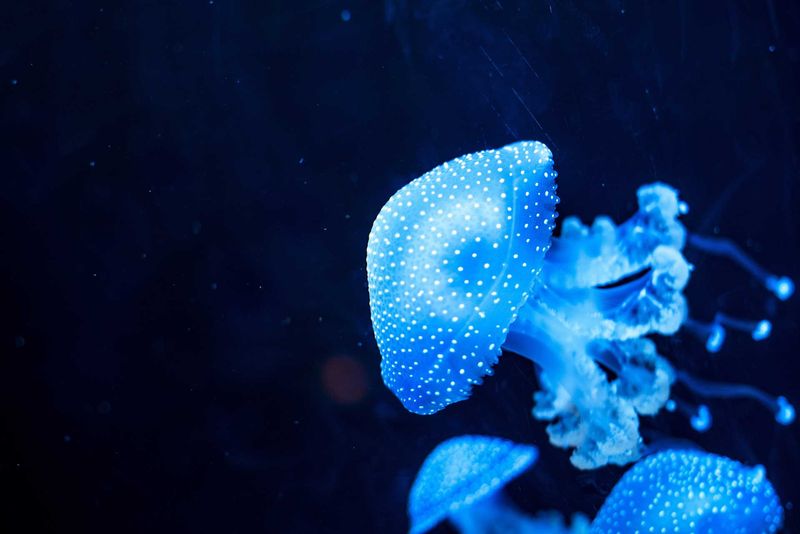
Floating gracefully through the ocean’s depths, glowing jellyfish captivate with their ethereal beauty. When exposed to UV light, they emit a radiant glow, a result of special proteins that fluoresce.
This glowing display is not only mesmerizing but also serves functional purposes in the jellyfish’s life. The glow may attract prey or mates, using its light to draw attention in the vast, dark ocean. It can also fend off predators, confusing them with its luminous patterns.
Such adaptations underline the jellyfish’s role as both predator and prey within marine ecosystems. For ocean explorers and marine biologists, encountering glowing jellyfish provides a glimpse into the wonders of underwater fluorescence.
It presents opportunities to study the ecological significance of luminescence and its evolutionary advantages, fostering a deeper understanding of marine life.
11. UV-Responsive Gecko
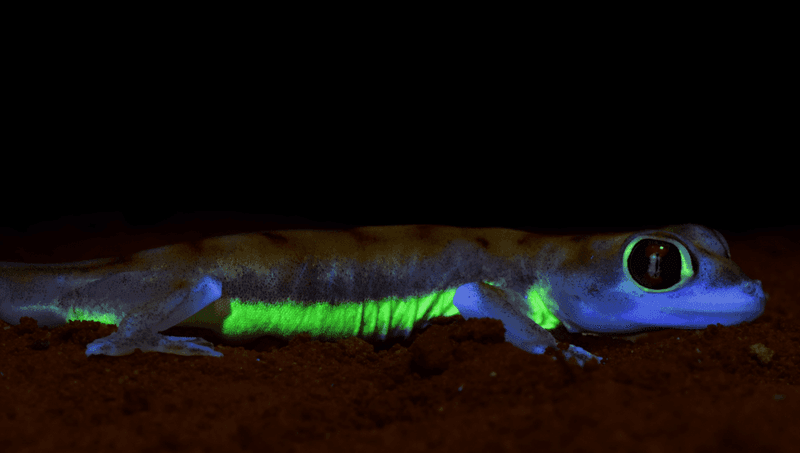
Geckos are agile reptiles often found in warm climates, but some species reveal a fluorescent glow under UV light.
This bioluminescence may assist in nighttime navigation or communication with other geckos. The glow results from natural compounds in their skin, providing a fascinating insight into these adaptable creatures.
The glowing trait might also serve as a defensive mechanism, confusing predators or signaling toxicity. Such evolutionary tactics highlight the gecko’s resilience and ability to thrive in diverse environments, from deserts to forests.
Herpetologists studying UV-responsive geckos uncover the complexities of reptilian behavior and adaptation. For wildlife enthusiasts, observing these glowing geckos in their natural habitat is a testament to nature’s creativity and the evolutionary marvel of fluorescence.
12. Fluorescent Anemone
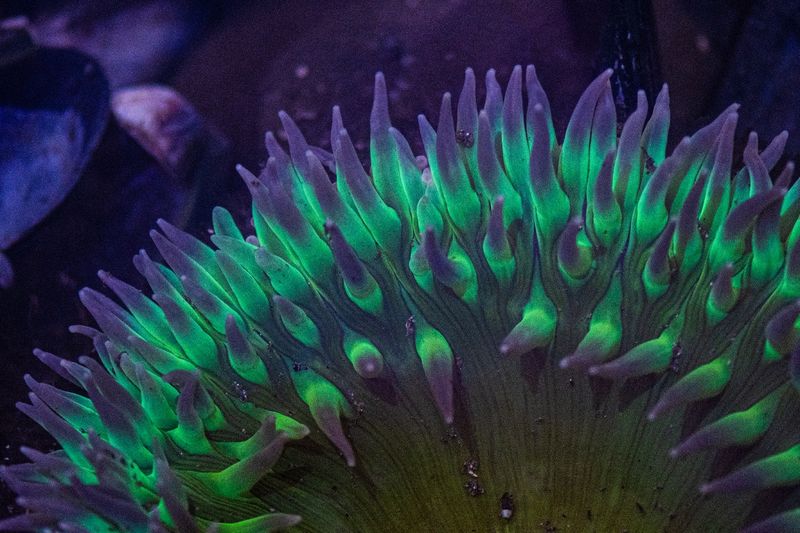
Anemones are often seen as static, flower-like creatures in tidal pools, but under UV light, they reveal a fluorescent transformation. This glow is due to proteins within their tissues, enhancing their allure and ecological role.
The bioluminescence may attract prey or symbiotic organisms, contributing to the anemone’s survival. The glowing effect might also protect anemones by camouflaging them among the colorful underwater landscape.
This adaptation showcases the delicate balance between attraction and defense in marine environments. Exploring tidal pools where fluorescent anemones thrive is a rewarding venture, offering insights into the interconnectedness of marine life.
It underscores the importance of protecting coastal ecosystems, rich with biodiversity and unique adaptations.
13. UV-Glowing Platypus
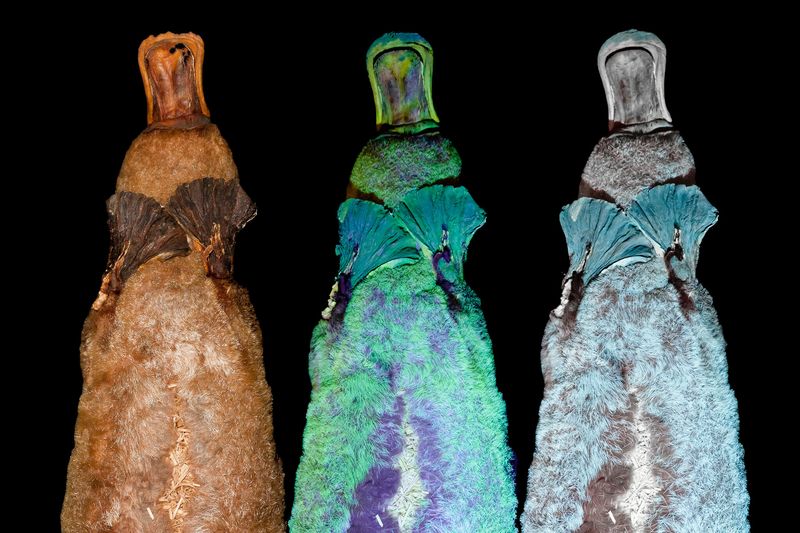
The platypus, an already enigmatic creature, unveils another layer of intrigue with its UV-induced glow. When exposed to ultraviolet light, its fur emits a subtle glow, adding to its mystique.
This bioluminescence could play roles in communication or environmental interaction, although its exact purpose remains a topic of research.
The platypus is a monotreme, laying eggs like a bird but nursing its young like a mammal, and its glowing fur adds to its list of peculiar traits. This unique mammal thrives in freshwater habitats, where its glow may serve as camouflage or social signaling.
For biologists, studying the UV-glowing platypus opens doors to understanding monotreme biology and evolution. Observing this glowing wonder in its natural habitat highlights the diversity of adaptation strategies across the animal kingdom and the ongoing mysteries of evolutionary biology.

